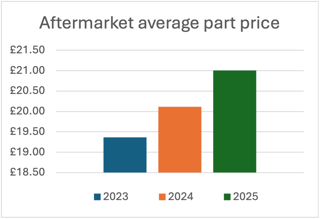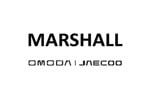Van buyers are facing a £1,732 average tax increase as Vehicle Excise Duty (VED) first-year rates - dubbed the “showroom tax”- jump in April.
The VED increase, announced in the Autumn Budget, is set to drive up costs for businesses and individuals planning to upgrade their vans.
The change will hit van owners collectively with an additional £15.5 million in VED over six months if sales trends hold steady, according to a study by Go.Compare.
Van buyers are facing a £1,732 average tax increase as Vehicle Excise Duty (VED) first-year rates - dubbed the “showroom tax”- jump in April.
The VED increase, announced in the Autumn Budget, is set to drive up costs for businesses and individuals planning to upgrade their vans.
The change will hit van owners collectively with an additional £15.5 million in VED over six months if sales trends hold steady, according to a study by Go.Compare.
Diesel vans face the steepest blow, with buyers paying an average of £1,807 more per vehicle, adding £14.2m to the tax bill. The hike is tied to CO2 emissions, which place diesel models in the highest VED bands. Petrol van buyers won’t escape unscathed, either, forking out an average of £1,354 extra - a total of £1.2m in additional taxes.
For greener alternatives, the increase is far gentler. Hybrid van buyers will pay just £252 more, while electric van purchasers see a token rise of £10.
Tom Banks, motoring expert at Go.Compare, said: “The increased VED rates will result in a big hit if you buy a brand-new van later this year, but there are things you can do to absorb the blow. The tax rates are based on CO2 emissions, so if you’re able to, this is a good time to switch to a van using cleaner fuels in the cheaper tax bands.
“If you can’t buy a suitable hybrid or electric van, you could go for a ‘nearly new’ one instead. This lets you enjoy a vehicle that’s pretty much as good as new without breaking the bank, and means you can dodge the increased tax.
“Failing this, see if there are any other ways you can reduce your motoring spending to counteract the higher tax. Comparing van insurance policies might help you find a provider offering the same amount of protection for less, and finding new ways to maximise your fuel economy could help to cut costs further.”
How Go.Compare worked out the VED increases
It took DfT figures on the number of privately owned light goods vehicles initially registered in the first half of 2024, split by local authority area, fuel type and CO2 band.
Using DVLA information, it then applied the first-year rate that would have to be paid for each group of light goods vehicles based on their CO2 band. Then, for each band, the number of vans was multiplied by its first-year fee, giving an estimate of the total for all vans in each band. These were then totalled to estimate the amount payable for all new light goods vehicles in the first half of the 2024 tax year.
Go.Compare then repeated this process using the band fees for 2025 sourced from Parkers and took the difference between the 2024 and 2025 numbers. This gave an estimate of the total extra amount that would be spent on this tax in the first half of the 2025 tax year (April to September) if new van registrations remain the same in this period.
The figure was divided by the number of new light goods vehicles to determine the extra fee per van. The data was then split by fuel type and local authority area to project the extra tax that will be paid by owners of light goods vehicles from each fuel type and area during this period, should new van registrations stay the same.
Login to continue reading
Or register with AM-online to keep up to date with the latest UK automotive retail industry news and insight.




















Login to comment
Comments
No comments have been made yet.